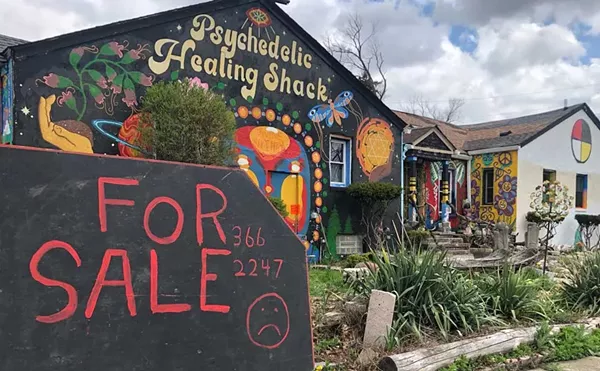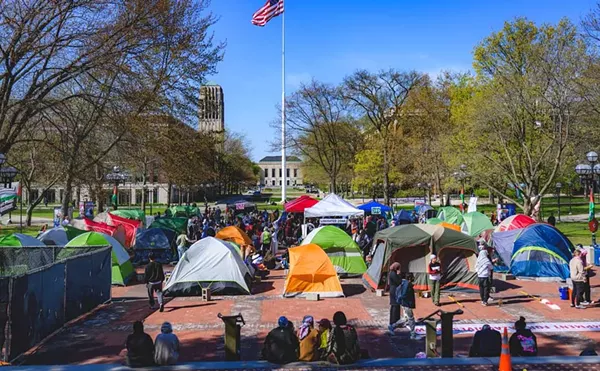
Audio By Carbonatix
[
{
"name": "GPT - Leaderboard - Inline - Content",
"component": "35519556",
"insertPoint": "5th",
"startingPoint": "3",
"requiredCountToDisplay": "3",
"maxInsertions": 100,
"adList": [
{
"adPreset": "LeaderboardInline"
}
]
}
]
Gunfire and poor health care coverage are a costly combination, according to the Journal of the American Medical Association (JAMA). Acute care and follow-up treatment costs for gunshot wounds incurred throughout the country in 1994 was $2.3 billion.
Taxpayers ended up paying nearly half that bill, with $1.1 billion (49 percent) coming from government programs such as Medicaid, the report states.
Private insurance paid 18 percent for gunshot wounds and other sources paid 33 percent.
During the study year – the most recent for which adequate data were available – there were 134,445 gunshot wounds in the United States, with the average lifetime medical cost per injury of about $17,000, according to the report.
"I would not contest their numbers," says Detroit trauma surgeon Dr. Scott Dulchavsky, "but they are probably lowballing it."
Dulchavsky, the chief of surgery at Detroit Receiving Hospital, says that about 40 percent of its gunshot patients do not have health insurance. With one of the busiest trauma units in the country, Receiving routinely has 25 to 50 of its 250 beds occupied by gunshot victims. Receiving treated 317 gunshot wounds in 1998, says Dulchavsky.
Philip J. Cook, Ph.D., of the Stanford Institute of Public Policy at Duke University, says he and his colleagues did the study to add to the ongoing debate over gun control.
"I think it changes the topic of conversation in a useful way," says Cook about the report. "The fact is that it isn’t just someone else’s problem but a problem that everyone shares."
The JAMA report also states that government programs are the primary payers of emergency room costs for 62.5 percent of spinal cord injuries due to gunshots and 88.6 percent of spinal injury cases after initial hospitalization.
Dulchavsky describes the cost involved with a 22-year old patient who was shot in the neck and is now a quadriplegic. After a month in intensive care, the patient was in the hospital’s spinal cord rehabilitation unit. Dulchavsky estimates that this patient’s time at Receiving cost about $250,000. "He will be on a breathing machine his entire life," he says. "And quadriplegics are considerably more likely to have other complications. He will be in the hospital two or three times a year." These additional hospital visits will run $50,000 to $75,000 annually, he says.
Dulchavsky cites other gunshot costs to society including government assistance to the temporarily disabled. "Routine gunshot wounds can put a person out of work three to six months and sometimes a year," he says. Many patients suffer from depression and treatment for this adds up, says Dulchavsky, along with "the whole criminal justice system and the cost of going after perpetrators."
Dr. Brooks Bock is the chief of emergency at DRH and the chair of the Department of Emergency Medicine at Wayne State University’s Medical School. Though Bock has no way of knowing whether the JAMA report figures are accurate, he says that "they certainly reflect the tremendous cost to society of something that is clearly preventable."
Bock says the vast majority of gunshot wounds happen to young men. "The costs as you can imagine become enormous over a lifetime," he says. "It is a tragedy, a national tragedy."





